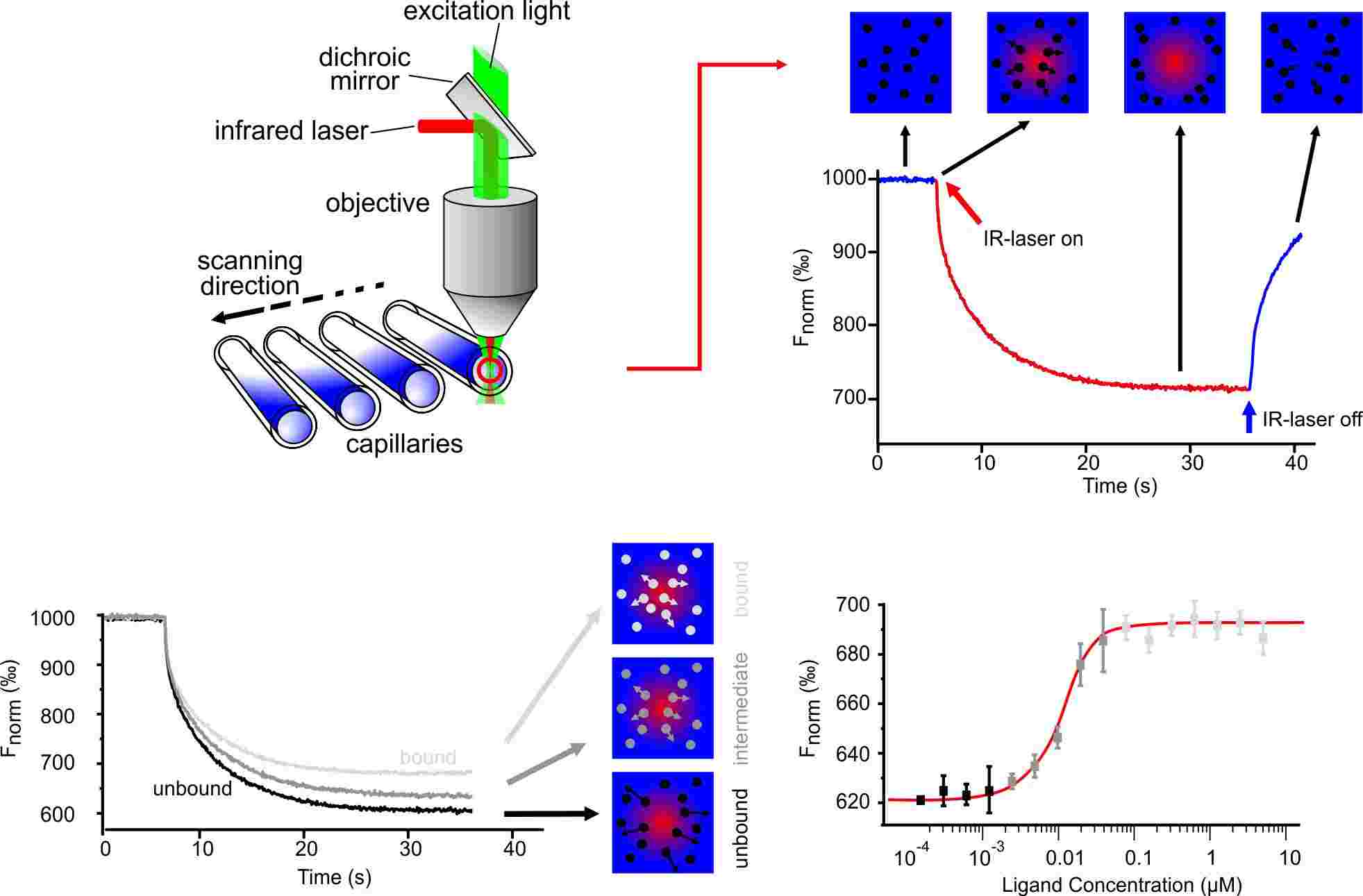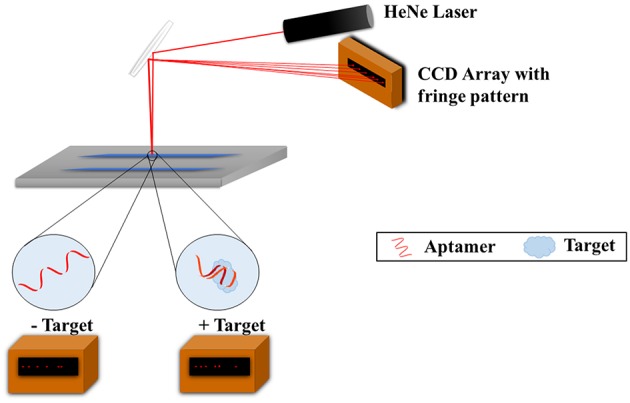Aptamers are potent binding molecules that specifically bind to various classes of target molecules. Characterization of aptamer binding properties is essential for studying aptamer recognition function and integrating the special recognition capabilities into diverse applications such as target therapy and disease diagnosis. Creative Biolabs provides access to a variety of biochemical analysis technologies and services for researchers to rapidly and effectively characterize the affinities of aptamers to various ligands including biomacromolecules and small molecules.
Microscale Thermophoresis (MST)
MST is an immobilization-free technology that allows for the measurement of interactions between biomolecules directly in solution without the requirement of immobilization to a surface. It is based on the detection of the movement of molecules along a temperature gradient, which strongly relies on a variety of molecular properties such as size, charge, and hydration shell. When the target binds to its corresponding aptamer, one or more of the molecular properties changes and alters its movement through temperature gradients. By detecting and analyzing the motion change, the affinity of the aptamer to the target is characterized. MST has been indicated as a rapid and precise method to characterize small molecule-aptamer interactions at microliter scale.
 Fig. 1 Principle of the MST technology.1
Fig. 1 Principle of the MST technology.1
Back-scattering Interferometry (BSI)
BSI is a free-solution, label-free molecular technology that is developed for assessing the interactions between biomolecules through detecting temporal changes in refractive index (RI) which can be caused by intermolecular binding interactions. This method has been successfully applied for measuring aptamer affinity to larger molecules. For example, Olmsted et al. (2011) utilized the BSI technique to measure the binding interactions among multiple DNA aptamers to a target protein (human α-thrombin) in solution. Furthermore, several studies also revealed BSI can be successfully applied for measuring affinities of aptamers to some small molecules such as bisphenol A, tenofover, and epirubicin.
 Fig. 2 Principle of the MST technology.2, 4
Fig. 2 Principle of the MST technology.2, 4
Surface Plasmon Resonance (SPR)
SPR is a surface-sensitive, label-free detection platform that is widely applied for detecting biological macromolecules, such as DNA, RNA, proteins. It is based on the detection of the changes of RI which is caused by the binding process of those macromolecules. SPR technique has been used for characterizing aptamer-ligand interactions.
 Fig. 3 Design of aptamer-based biosensors that signal by SPR.3, 4
Fig. 3 Design of aptamer-based biosensors that signal by SPR.3, 4
Aptamer Binding characterization Services at Creative Biolabs
Creative Biolabs is a world-leading service provider who is committed to providing the most comprehensive aptamer development services including aptamer selection, characterization, synthesis, and modification services. Equipped with unparalleled experience and state-of-the-art label-free binding detection technologies such as MST, BSI, and SPR, we provide high-quality target binding characterization services for aptamer development. Furthermore, we also offer a variety of flexible customized analysis assays for aptamer binding characterization to meet the specific requirements of our clients.
For more detailed information, please contact us for more information and a detailed quote.
References
-
Jerabek-Willemsen, Moran, et al. "MicroScale Thermophoresis: Interaction analysis and beyond." Journal of Molecular Structure 1077 (2014): 101-113.
-
Ruscito, Annamaria, and Maria C. DeRosa. "Small-molecule binding aptamers: Selection strategies, characterization, and applications." Frontiers in chemistry 4 (2016): 14.
-
Mok, Wendy, and Yingfu Li. "Recent progress in nucleic acid aptamer-based biosensors and bioassays." Sensors 8.11 (2008): 7050-7084.
-
under Open Access license CC BY 4.0, without modification
Related Product
For Research Use Only.
Related Sections:

 Fig. 1 Principle of the MST technology.1
Fig. 1 Principle of the MST technology.1
 Fig. 2 Principle of the MST technology.2, 4
Fig. 2 Principle of the MST technology.2, 4
 Fig. 3 Design of aptamer-based biosensors that signal by SPR.3, 4
Fig. 3 Design of aptamer-based biosensors that signal by SPR.3, 4